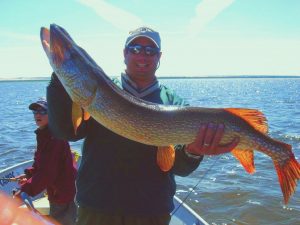Fishing Tips For Beginners


If you are fishing tips from a boat, it is very important to observe some basic rules. First of all, you should ask for permission before fishing near someone else. Also, you should never crowd the water by fishing too close. It is wise to maintain a distance of at least 100 yards. Furthermore, you should slow down to prevent disturbing shore anglers or kayakers. The reason for this is that boats will create a wake that will be seen by both groups.
Tidal chart
If you’re going fishing, a tide chart is an important tool for your trip. These charts are available online or in most local newspapers. You can also find them on the NOAA website. Tide charts can help you determine the best times to fish at specific locations. However, you should never use a tide chart as your only source of information.
If you’re going fishing at an unfavorable tide, you may end up getting stranded if you don’t know when the low tide is. You can avoid this by checking the tide chart at different times of the day.
Topographical maps
Using a topographical map to fish can help you identify specific areas that are teeming with fish. Not only can you learn where the fish are, but you can also learn how to get in front of them and make a catch. Knowing what fish like and dislike is a big part of catching a good catch.
Topographical maps can also show you the general depth of a body of water. A dark shading on a topo map means that the water is deeper. This is useful when breaking into a new body of water.
Live bait
Live bait is the most effective way to catch big fish. It can be the difference between a memorable fishing trip and an empty cooler. However, some anglers may not be able to get hold of live bait or may not wish to spend the money necessary for it. Fortunately, there are a few tips and tricks to live bait fishing that can help you increase your catch.
One of the most important tools for live bait fishing is a bobber. These devices provide extra weight when casting and signal to anglers when a fish bites. Live bait fishing tips include choosing the smallest float possible and using monofilament line rather than fluorocarbon. Other tools that can be useful include small weights to hold the bait in place.
Properly setting your reel’s drag
Setting your fishing reel’s drag is an important part of catching fish. If you don’t set it properly, you could break the line or end up with a broken hook. The drag is a set of friction plates on your reel that controls how much line on your reel lets out while fighting a fish.
First, you need to determine the drag force. This can be done by measuring the weight of the line you’re using. For example, if you have a forty-five-pound line, then the drag should be set to about a third of that amount. In other words, you want your drag to be strong enough to set the hook but not so strong that it breaks your line.
Using the wind to catch fish
The wind can be a huge factor in your fishing. Windy days can make baitfish move around, increasing the likelihood that you’ll catch a fish. It can also reduce the amount of light that penetrates the water, which can also increase your chances of catching a fish. Although many anglers don’t like fishing in the wind, it’s a good idea to be prepared for it.
When fishing in the wind, you should look for rocky structure that is surrounded by shallow water. These are great places to catch baitfish. The wind will also churn up zooplankton in shallow water, which bass will eat. Using the wind to catch fish is easy, and it doesn’t require any scientific knowledge.
Practicing casting
Practicing casting when fishing is an important part of the fishing experience. There are many different ways to practice your casting. Whether you are trying to improve your accuracy or get a better feel for the way your line moves practicing your cast will help you improve your skills in the field. One way to practice is to use a bucket of balls. You can also practice using a problem club.
Start practicing at least a month before your fishing trip. This will allow you to have frequent practice sessions and build confidence. Practice for five to ten minutes at a time. Make sure to practice a variety of different types of fishing conditions to ensure that you are prepared for any type of weather.

